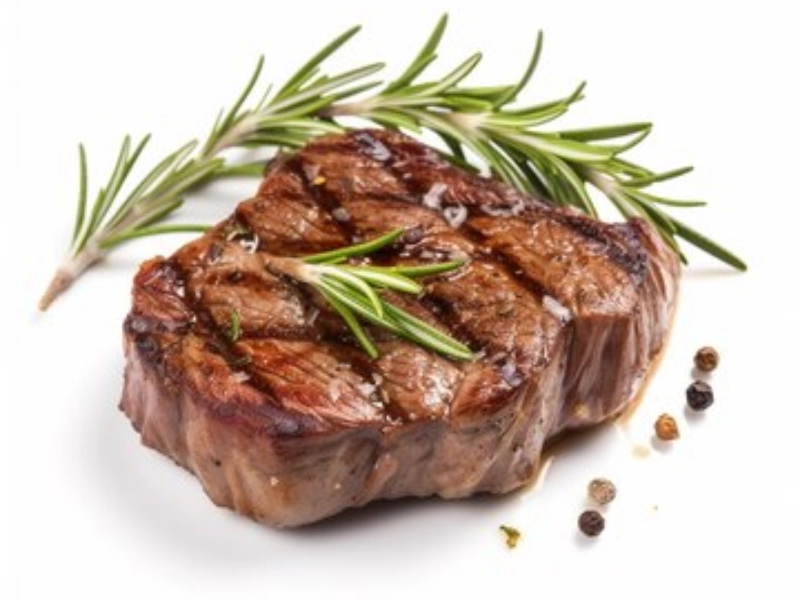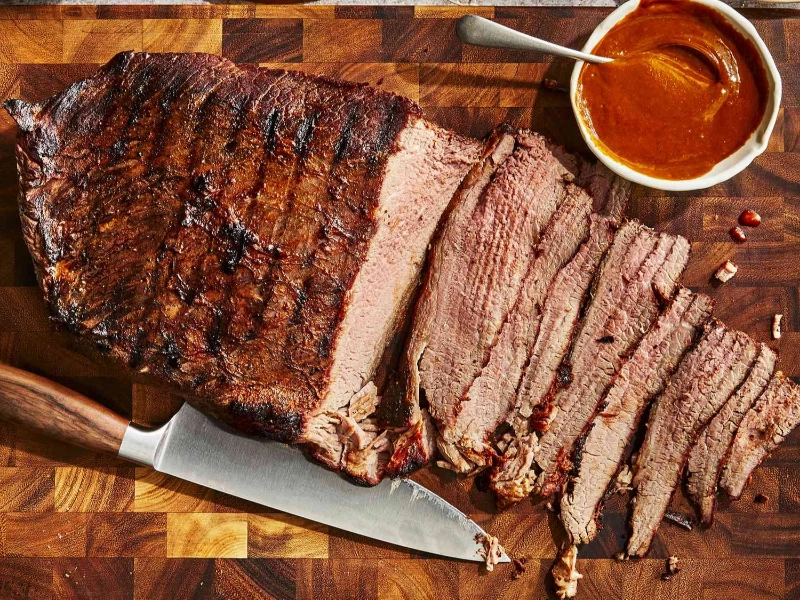Choosing the best cuts of beef will significantly affect your general diet and health. Given the several choices, it's important to know which cuts fit your dietary requirements, leaner, more nutritious ones, and which are This post will walk you through the process of selecting the best cuts of beef, investigate their nutritional profiles, cooking techniques, and advice on how to make wise grocery store purchases.
 There are several cuts to beef, each with unique tastes, textures, and nutritional value. Chuck, rib, loin, and round cuts define beef most fundamentally. Generally, cuts from the loin and round are slimmer; cuts from the chuck and rib sometimes are fattier. Lower in saturated fat and calories, lean cuts include sirloin, tenderloin, and eye of round are better choices for consistent eating. While delicious, cuts like T-bone and ribeye include more fat, which might help one consume more calories. Knowing these differences will enable you choose beef for your meals with more wisdom.
There are several cuts to beef, each with unique tastes, textures, and nutritional value. Chuck, rib, loin, and round cuts define beef most fundamentally. Generally, cuts from the loin and round are slimmer; cuts from the chuck and rib sometimes are fattier. Lower in saturated fat and calories, lean cuts include sirloin, tenderloin, and eye of round are better choices for consistent eating. While delicious, cuts like T-bone and ribeye include more fat, which might help one consume more calories. Knowing these differences will enable you choose beef for your meals with more wisdom.
 When searching for lean beef cuts, it's important to find ones labeled as such. Lean cuts—those with less than 10 grams of total fat and 4.5 grams of saturated fat per 3.5-ounce serving—are defined by the USDA as Three great lean cuts are round steak, flank steak, and sirloin steak. If you choose for ground beef versions at least 90% lean, it can also be a healthy choice. Look for cuts with low apparent fat when purchasing; avoid ones with too much marbling since this suggests more fat content. Emphasizing lean cuts will help you to make your meals healthier while nevertheless enjoying the rich tastes of beef.
When searching for lean beef cuts, it's important to find ones labeled as such. Lean cuts—those with less than 10 grams of total fat and 4.5 grams of saturated fat per 3.5-ounce serving—are defined by the USDA as Three great lean cuts are round steak, flank steak, and sirloin steak. If you choose for ground beef versions at least 90% lean, it can also be a healthy choice. Look for cuts with low apparent fat when purchasing; avoid ones with too much marbling since this suggests more fat content. Emphasizing lean cuts will help you to make your meals healthier while nevertheless enjoying the rich tastes of beef.
 The healthiness of beef can be much influenced by your cooking and preparation methods. Excellent cooking techniques that let extra fat flow away while maintaining the flavor and moisture of the meat are grilling, broiling, and roasting. Without adding bad fats, these techniques also help a great crust to grow, so improving the general taste. Steer clear of fried or sautéed meat in great quantities of butter or oil since this will double the calorie and fat count. To enhance taste without sacrificing health, also marinade lean slices of beef in herbs and spices instead of strong sauces. Choosing better cooking techniques would help you to keep a healthy diet while yet enjoying great beef meals.
The healthiness of beef can be much influenced by your cooking and preparation methods. Excellent cooking techniques that let extra fat flow away while maintaining the flavor and moisture of the meat are grilling, broiling, and roasting. Without adding bad fats, these techniques also help a great crust to grow, so improving the general taste. Steer clear of fried or sautéed meat in great quantities of butter or oil since this will double the calorie and fat count. To enhance taste without sacrificing health, also marinade lean slices of beef in herbs and spices instead of strong sauces. Choosing better cooking techniques would help you to keep a healthy diet while yet enjoying great beef meals.
 Combining beef with healthy foods is crucial to produce well balanced dinners. Including a range of veggies, healthy grains, and legumes will help your meals have more nutritional worth. Serving lean beef with a vibrant salad or steamed vegetables, for instance, adds minerals, vitamins, and fiber to your diet. total grains, like brown rice or quinoa, offer complex carbohydrates and extra nutrients, therefore enhancing the total value of your dinner. Furthermore, including good fats—such as avocado or olive oil—can accentuate beef's tastes and supply important fatty acids. Carefully combining beef with nutrient-dense foods will help you create meals that are both great and health-conscious.
Combining beef with healthy foods is crucial to produce well balanced dinners. Including a range of veggies, healthy grains, and legumes will help your meals have more nutritional worth. Serving lean beef with a vibrant salad or steamed vegetables, for instance, adds minerals, vitamins, and fiber to your diet. total grains, like brown rice or quinoa, offer complex carbohydrates and extra nutrients, therefore enhancing the total value of your dinner. Furthermore, including good fats—such as avocado or olive oil—can accentuate beef's tastes and supply important fatty acids. Carefully combining beef with nutrient-dense foods will help you create meals that are both great and health-conscious.
There are various things to consider while shopping for beef to guarantee you get the best choices in terms of health. First, become acquainted with the beef cuts and their respective fat contents. Search for labels saying "grass-fed" or "organic," since these choices usually have less dangerous chemicals and more omega-3 fatty acids. Note the meat's color and texture; fresh beef should be vivid red with little discoloration. Furthermore take into account buying beef from nearby farms or butcher stores, where you may find out about the meat's quality and source. Through informed and selective shopping, you can choose better foods that fit your nutritional goals.
Maintaining a healthy diet depends mostly on portion sizes, which also apply specifically for beef intake. Cooked beef often comes in a normal serving size of 3.5 ounces, about the size of a deck of cards. Eating too much beef, especially fattier cuts, could cause too high calorie consumption and possible health problems. Think about including beef as one element of your dish instead of the main emphasis to produce well balanced meals. To guarantee a well-rounded dinner, load your plate with of vegetables, whole grains, and good fats. Mindful of portion sizes and including a range of dietary groups, you can enjoy beef while maintaining your general health and wellness.